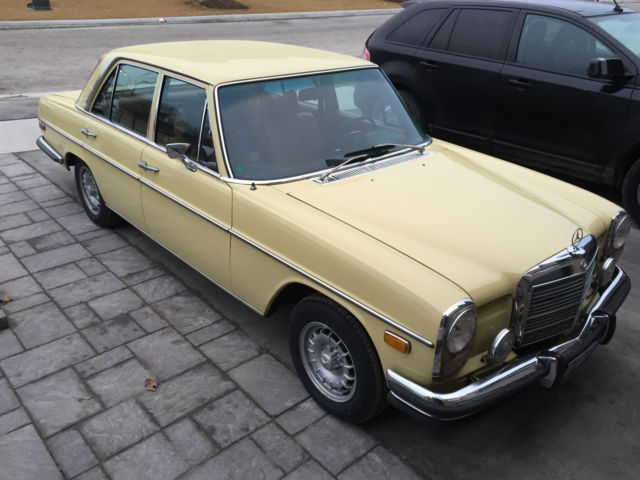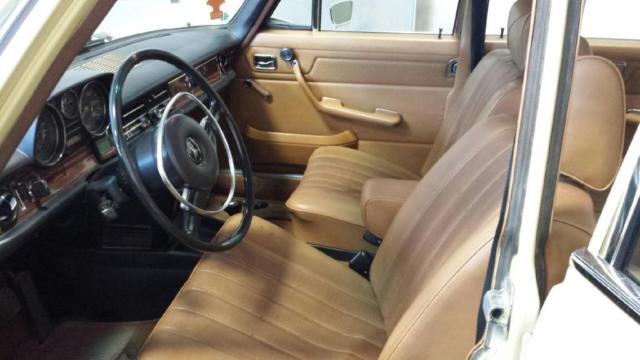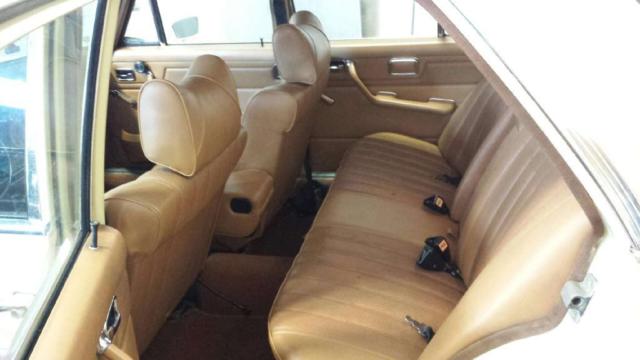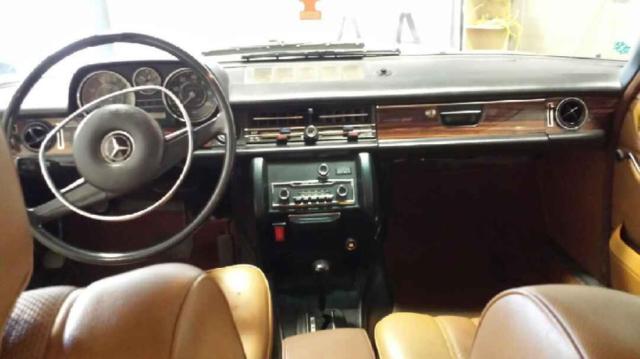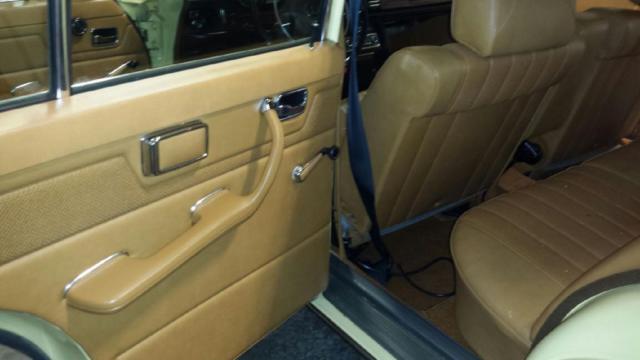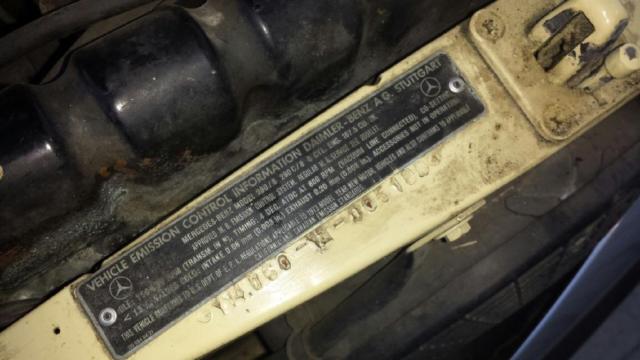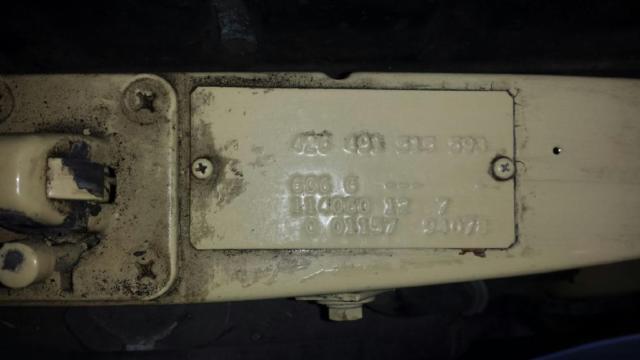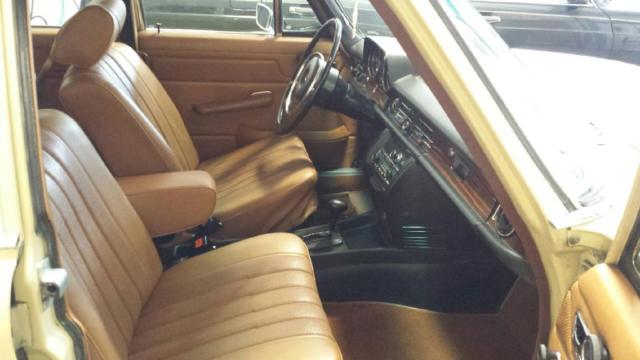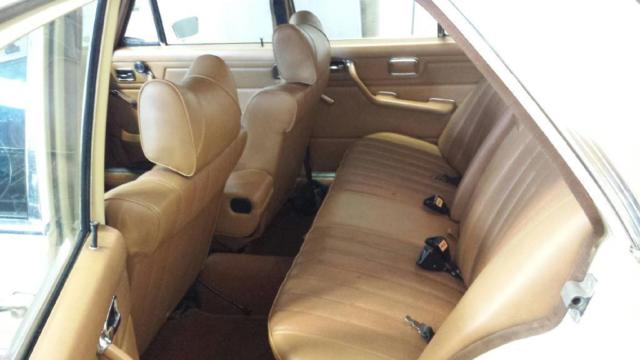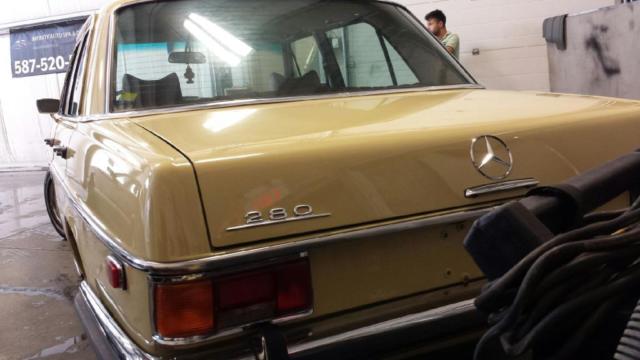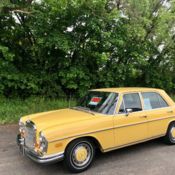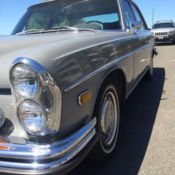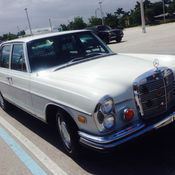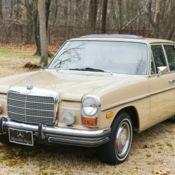1973 Mercedes Benz 280
| Make: | Mercedes-Benz |
| Model: | 200-Series |
| SubModel: | 280 |
| Type: | Sedan |
| Trim: | 280 |
| Year: | 1973 |
| Mileage: | 65,341 |
| VIN: | 11406012005185 |
| Color: | Yellow |
| Engine: | V6 DOHC |
| Cylinders: | 6 |
| Fuel: | Gasoline |
| Transmission: | Automatic |
| Drive type: | RWD |
| Interior color: | Brown |
| Vehicle Title: | Clear |
| Item location: | Richmond Hill, Ontario, Canada |
| Extras |
| Listed by |
| Private seller |
Description of 1973 Mercedes-Benz 200-Series 280 |
|
1973 Mercedes Benz 28, 4 door 6 Cylinder DOHC. I have owned it for 2 years . I want to keep it but need to move it due to change job which forced me to let it go. It Was restored by previous owner 14 years ago. Paint is in Very good condition Body has some normal wear. Under carriage is clean. Interior is original . All Interior lights work all gauges works. Original seat belt. Seats are clean. All doors close solid like a classic benz. Orginal Becker Radio. No AC . Blower works as normalEngine. Runs excellent . Rebuilt the Carbs 6 months ago. Tune up done ( spark plug caps rotors contact point and condenser. New Ignition oil to. Brand new Yokohama tires 3 months old New brakes All Calipers been rebuilt. .Benz runs excellent with no issues. Email me for questions Importing classic cars from Canada to Us is very straight forward. This benz classic is exempt on all US requirements due it more than 25 years old http://www.ezbordercrossing.com/the-inspection-experience/import-a-vehicle/importing-vehicle-from-canada/#.V7EWyTb6tdg Importing from CanadaImporting a Car Purchased in Canada to the United States Below we describe the basic process to import a vehicle into the United States. We are focusing on U.S. residents who are buying a car orsimilarvehicle in Canada. There are rule differences for temporary stays, Canadians moving permanently to the U.S., returning military personnel, employees working abroad and other types of importers. As soon as you decide to buy a Canadian vehicle you should call or review the website of each of the following agencies to confirm the required paperwork and current process:
We have contact information for each on ourGovernment Contactspage. Selecting a Vehicle to Purchase – Meeting U.S. Standards to Import a VehicleIf the vehicle you are importing is less than 25 years old you will need to prove that it meets U.S. safety and emission requirements. Most cars sold in the U.S. are built specifically for this market and cars built for the Canadian market may not meet all of the requirements. If your car was manufactured more than 25 years ago it is exempt from these requirements. At least 2-3 weeks before importing your vehicle you must contact the manufacturer of the vehicle and ask for a letter stating that your vehicle complies with all applicable U.S. safety and emission standards. The letter must identify your vehicle by the Vehicle Identification Number (VIN). Read this letter very carefully.
We have heard stories from buyers that manufacturers are sometimes unresponsive to requests to provide these types of letters. If you are purchasing the vehicle from a dealer, you may need to push them to make the request on your behalf. Buying the Car You Want To Import
You need to have all of the documentation for the vehicle with you when you cross the U.S. border. You will be sent inside the Customs building to fill out form CBP 7501 and possibly others. You can find copies of these forms on the U.S. CBP website. To safeguard against importation of dangerous pests, the U.S. Department of Agriculture requires that the undercarriage of imported cars be free of foreign soil. Have your car steam-sprayed or cleaned thoroughly before shipment. Duties and Taxes to Import a Vehicle into the United StatesMost vehicles made in Canada or the U.S. are not subject to duties. For foreign-made vehicles you will likely pay the following
As a returning U.S. resident, you may apply your $400 Customs exemption and those of accompanying family members toward the value of the vehicle. After the exemption has been applied, a flat rate of 10% is applied toward the next $1,000 of the vehicle’s value. The remaining amount is dutiable at the regular duty rate. To qualify:
Certain imported automobiles may be subject to a “gas-guzzler” tax if your car has a combined EPA fuel-economy rating of less than 22.5 miles per gallon. This EPA rating may be different from fuel-economy ratings indicated by the manufacturer. What to Do When You Get Back Home
Email me for questions |
 Home
Home Contact us
Contact us NEWEST CARS
NEWEST CARS SELL YOUR CAR
SELL YOUR CAR FAQ
FAQ